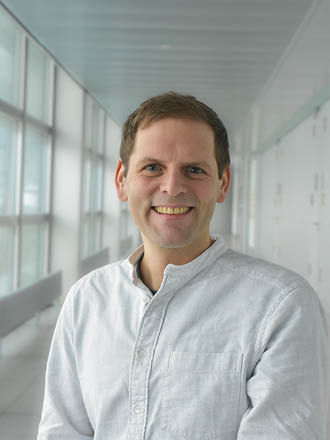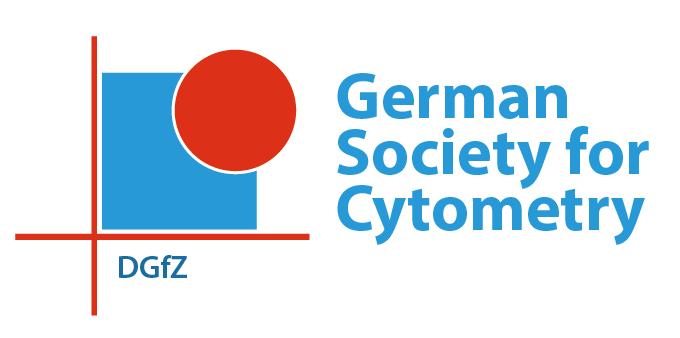Endosymbiosis to Nanobiotechnology Session
Thursday, 12.09.2024, 9:00 am
Chairs: Christin Koch, Lisa Budzinski, Wolfgang Fritzsche
The session will highlight innovative approaches and applications contributing to biosensor development and the understanding of single cell interactions.
Biosensors provide cost-effective, easy-to-use, sensitive and highly accurate detection devices for biomolecules of interest in a variety of research and commercial applications such as clinical research, diagnostics or bioprocess monitoring. The session will present the potential, developments and implementation approaches of carbon 2D materials e. g. graphen.
Further, this session will introduce Fluidic Force Microscopy which enables to manipulate cells with single cell resolution and has already successfully been applied to biological systems. As an example, it will be demonstrated how artificial endosymbiosis can be established in fungal cells based on a fluidic force microscope followed by characterisation of the fungal cells on single cell level.
The session will be complemented by short talks in the field of microbiology and nanotechnology, to explore the different facets of cutting edge technologies and developments in the nano- and micrometer range.

Andrey Turchanin
Institut für Physikalische Chemie, Friedrich-Schiller-Universität Jena
Two-dimensional (2D) carbon materials for ultrasensitive detections of biomarkers
Carbon based 2D materials like graphene – hexagonally ordered monolayer of carbon atoms – or molecular carbon nanomembranes (CNMs) – 1 nm thick molecular nanosheets – open broad avenues for applications in nanobiotechnology including the assembly of protein biochips, structural studies of biomolecules and ultrasensitive detection of biomarkers. In this talk, I will give an overview of the most relevant properties of these materials for highly sensitive, rapid and selective detection of biomarkers as well as challenges and prospects with their integration into clinical research and diagnostics. I will present our resent progress on implementation of 2D carbon materials in sensors functioning either on optical readout, related to the surface plasmon resonance (SPR) phenomena, or on electrical readout, based on measurements of the field-effect transistors (FETs). By studying such pathogens like RSV and SARS-CoV-2, it will be demonstrated that 2D carbon materials enable to achieve very high sensitivity in detection of the related biomarkers. In case of the SPR-based sensors the limit of detection is found to be in the range ~1 pM, and in case of the FET-based sensors it is even 5 orders of magnitude better ~10 aM. Moreover, I will discuss development of the microscopic sensor arrays capable to simultaneous and rapid (~1-10 min) screening of more than 100 biomarkers using small sample volumes and without any need for bioamplification.
Biosketch
Andrey Turchanin is professor of Physical Chemistry at the Friedrich Schiller University Jena, Germany. He studied physics and materials science at the National University of Science and Technology, Moscow (Ph.D. 1999). In 2000 he moved to the Karlsruhe Institute of Technology with an Alexander von Humboldt Fellowship. 2004-2014 he joined the Faculty of Physics at the University of Bielefeld where he completed his habilitation in experimental physics in 2010. In 2012 Turchanin became a Heisenberg Fellow of the German Research Foundation (Solid State Physics) and in 2014 a full professor at the Friedrich Schiller University Jena. His current research interests are nanoscience and nanotechnology with a particular focus on 2D materials.

Thomas Gassler
Institute of Microbiology, ETH Zurich
Inducing Novel Endosymbioses by Bacterial Implantation into Fungi
Microbial endosymbioses have had a profound impact on the evolution of life. The endosymbiosis-mediated acquisition of aerobic respiration and photosynthesis, resulting in mitochondria and chloroplasts, respectively, are prominent examples. However, understanding the requirements and mechanisms for endosymbiogenesis is challenging. By combining atomic force microscopy, optical microscopy, and nanofluidics, we developed a FluidFM-based method to extract, inject, and transplant organelles and bacteria directly into living cells. This method enables us to track artificially induced endosymbiosis in the widespread filamentous fungus Rhizopus microsporus. FluidFM-based injections of bacteria into R. microsporus, followed by FACS-mediated positive selection, allowed to introduce endosymbionts into this novel fungal host. We showed that the transplanted bacterium can be vertically transmitted across host generations and can be selected for. Adaptive laboratory evolution mitigated initially observed compromised host fitness and stabilized the endosymbiosis. Genetic and transcriptomic analyses shed light on the dynamics and fitness constraints during early endosymbiogenesis. Overall, our findings could improve the understanding of the balance between mutualism and antagonism in early endosymbiogenesis and help to study cost-benefit trade-offs.
Biosketch
Thomas Gassler earned his PhD at the University of Natural Resources and Life Sciences Vienna, focusing on engineering methylotrophic yeast to consume CO2 as sole carbon source. In 2021, he joined the lab of Julia Vorholt at the Institute of Microbiology at ETH Zurich with an ETH postdoctoral fellowship. Since then, the focus of his work has been engineering artificial endosymbiosis. Currently, the lab of Julia Vorholt explores the early stages of endosymbiosis in filamentous fungi, aiming to understand and manipulate these interactions for scientific and environmental benefits.
Simone de Carli
Fraunhofer Institute for Cell Therapy and Immunology IZI, Branch Bioanalytics and Bioprocesses IZI-BB, Potsdam, Germany
X-ray Compatible Flow Cell for Dielectrophoretic Manipulation and Trapping of Cells and Microparticles
In this work we present a soft X-ray microscopy compatible microfluidic device for single-cell and microparticle studies. In a single-cell study, efficient dielectrophoretic (DEP) manipulation of cells and stable trapping are crucial for accurate microscopy and image acquisition. We present an approach that enables robust trapping of micro-objects in an X-ray transparent flow cell.
By photolitographically patterned gold electrodes on a silicon nitride (Si3N4) membrane and using negative dielectrophoresis (n-DEP), the system allows micrometer-scale manipulation of cells in a microfluidic channel and a downstream single-cell trapping for soft X-ray inspection. Our approach handles, traps and rotates the object of interest, ensuring its stable position within a field-cage in the laser focus, for in vivo high-resolution cell imaging. Additionally, the system offers easy sample replacement for sequential inspection without the need for full vacuum decompression, allowing for the inspection of a wide variety of samples, including
bacteria, algae, yeasts and microparticles.
X-ray microscopy represents a powerful label-free technology for cellular analysis of intrinsic biophysical
properties with nanometric resolution of the three-dimensional structure of intact cells. Soft X-rays ranging from 284eV to 543eV (“water window”) are particularly suitable for high-resolution analysis, where the absorption of photons by functional groups, especially carbon and nitrogen, prevails over the transparency of water. Therefore, Soft X-rays have a large penetration depth in water and still enable highresolution imaging of biological specimens in their natural environment.
Our chip consists of two commercial Si3N4 multi-windows frames, XUV and soft X-rays transparent, bonded using a patterned pressure-sensitive adhesive with a thickness of just 10μm. Each substrate contains custommade gold planar microelectrodes to perform different DEP operations on microparticles (focus-deflectiontrapping). The focus and deflection electrodes enable the active DEP-guided positioning of the micro-object towards the field-cage for X-ray analysis.
Carrie Maynard
Lightcast Discovery Ltd, Cambridge, United Kingdom
A programmable and automated microfluidic platform for massively parallel and sequential processing of single cell assay operations
Cancer immunotherapy has seen significant advancements, revolutionising treatment and improving patient outcomes. Single cell profiling has been instrumental in this development. However, traditional single cell technologies, while providing extensive ‘omic datasets, have not facilitated direct functional analysis at the single cell level. We propose that such analysis is crucial for understanding the complex cellular interactions within the tissue microenvironment.
We present a platform that utilises droplet microfluidics and optical electrowetting-on-dielectric (oEWOD) to conduct controlled, sequential, and multiplexed single cell assays in massively parallel workflows. This enables complex cell profiling during screening. Soluble reagents, cells, or assay beads are encapsulated into droplets in fluorous oil. These droplets are actively filtered based on size and content, ensuring only desirable droplets (e.g., single cell droplets) are retained for analysis, thereby overcoming the Poisson distribution. The droplets are stored in a temperature-controlled chip array, and each droplet’s history is tracked from filtering to workflow completion.
On the chip, droplets undergo an automated suite of operations, including merging sample droplets and acquiring fluorescent assay readouts. This enables complex sequential assay workflows. To illustrate the platform’s utility in immuno-oncology, we present single-cell functional workflows for antibody discovery and cell and gene therapy. For instance, droplets containing single immune effector cells, such as T-cells, merge twice with droplets containing single target cells. This workflow can be used to investigate T-cell exhaustion or test effector cell killing specificity.
Our platform provides a powerful tool for single cell functional analysis, offering potential advancements in cancer immunotherapy. By enabling complex cell profiling and overcoming limitations of traditional single cell technologies, it opens new avenues for understanding cellular interactions and functional profiling of individual cells.
Peter Rubbens
Kytos BV, Ghent, Belgium
Cytometric indicators quantify microbiome health in aquaculture systems
Aquaculture farmers breed fish, crustaceans and aquatic plants in a (semi-)controlled way. Variations in the microbiome can have a large impact on these cultured organisms, and as such, may result in considerable production losses. For example, it is estimated that 10% of all cultured fish die from infectious diseases. Early mortality syndrome, caused by several species of Vibrio, has been responsible for large losses in cultured shrimp. At Kytos, we analyze the microbiome in aquaculture systems using flow cytometry. By now, we have analyzed about 40,000 samples coming from 125 unique farms and companies. Backed by previous research in microbial ecology, we have developed multiple cytometric indicators to quantitatively characterize changes in the aquaculture microbiome.
For example, a sudden decline in microbial diversity increases the risk for the outgrowth of (opportunistic) pathogens. A sudden increase in microbial productivity can be related to overfeeding by the farmer. We provide an overview of these cytometric indicators, which include microbial load, diversity and productivity, and discuss how they should be interpreted with regards to microbiome health in aquaculture systems. Additionally, we show how cytometric measurements can be integrated with other culture-independent technologies in order to predict potential risks for specific pathogens, such as Vibrio spp. Context is provided through examples from shrimp aquaculture based in the Mekong Delta.
Toni Sempert
German Rheumatology Research Center Berlin, a Leibniz Institute
The stratification by age is critical for microbiome analyses of children with juvenile idiopathic arthritis
Juvenile idiopathic arthritis (JIA) is the most common autoimmune disease affecting the joints in children and teenagers. The etiology of JIA is unclear, but genetic and environmental factors, such as the intestinal microbiome, have been implicated. We have analyzed the intestinal microbiota from JIA patients and sex- and age-matched healthy individuals using single-cell analysis by multi-parameter microbiota flow cytometry and 16S rRNA gene amplicon sequencing. For microbiota flow cytometry, we assess coating of bacteria with different host immunoglobulin isotypes and the expression of specific sugar moieties on the bacterial surface. We then use a self-organizing map algorithm for dimensionality reduction and clustering combined with machine-learning to identify disease-specific microbial phenotypic signatures. We can show that overall the JIA microbiome significantly differs from that of healthy controls on the taxonomic level. For the identification of a JIA-specific microbial phenotypic signature by flow cytometry, a further stratification of the JIA patients according to age was critical. This suggests that age-dependent, perhaps physiological, alterations additionally shape the JIA microbiota. The stratification by age also revealed that different bacterial taxa were decisively differentially abundant in the microbiomes of JIA patients and healthy donors. Thus, our data indicate that a stratification by age could be particularly important for the specific identification of alterations of the microbiome in JIA and in chronic inflammatory diseases affecting children in general.

